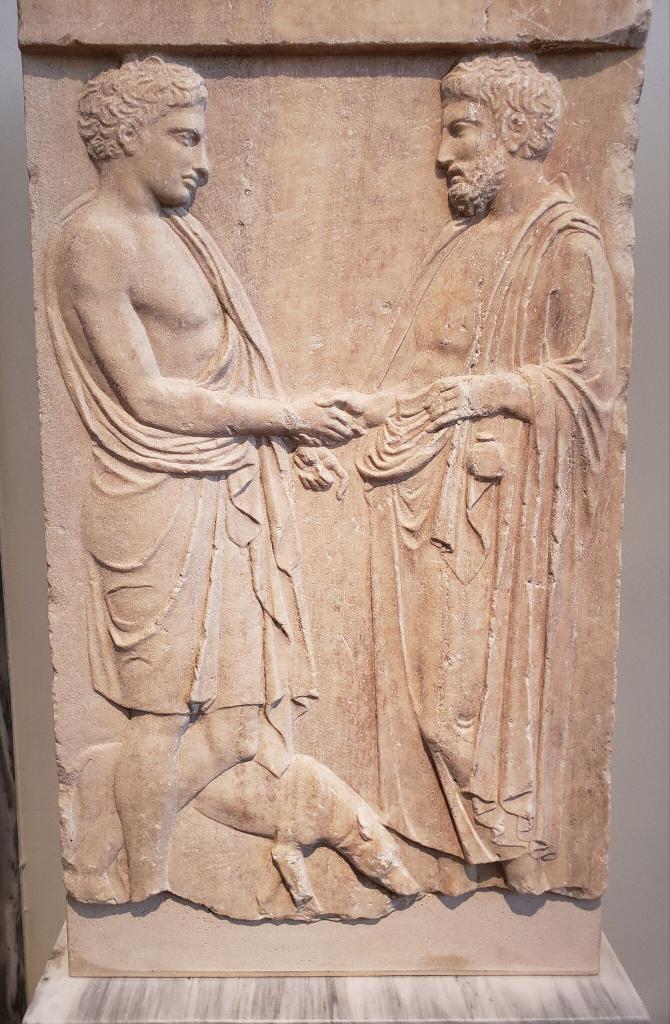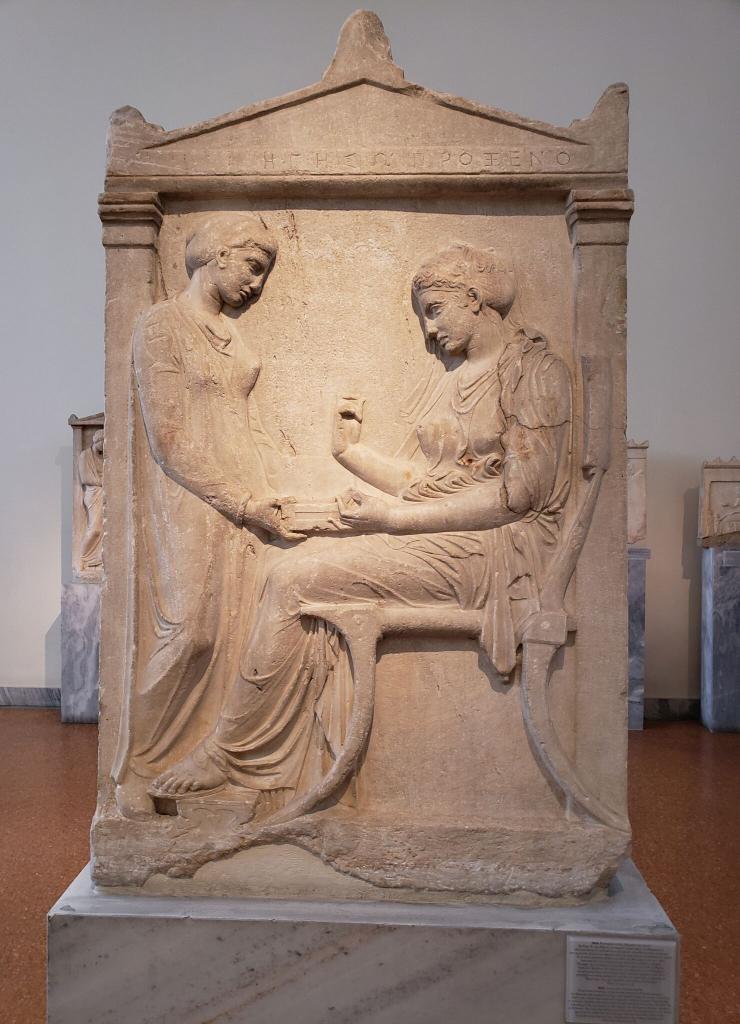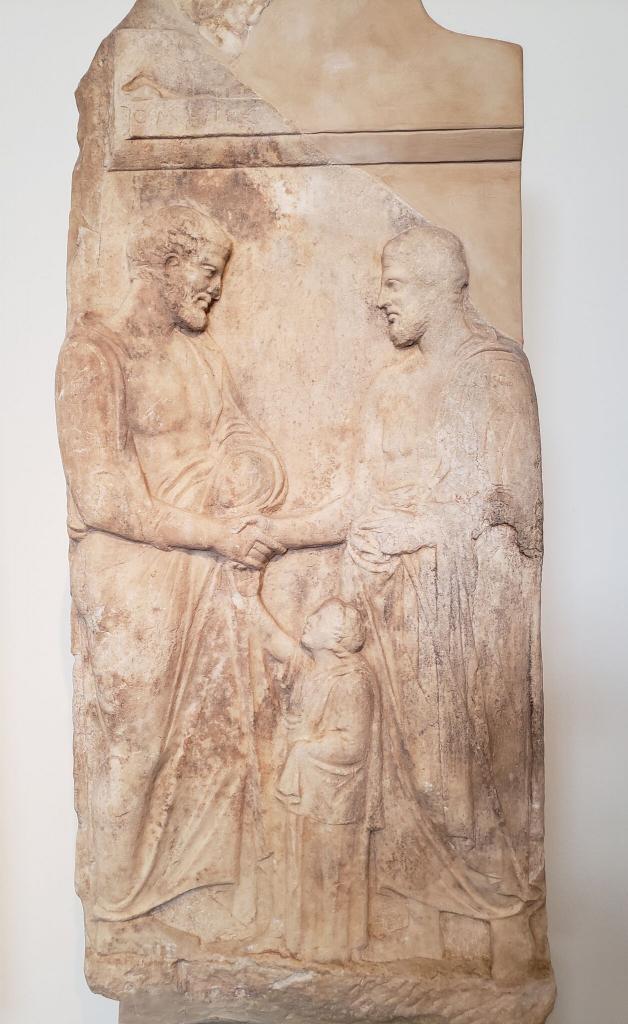Grave Steles tell us a lot about the mourning customs of ancient cultures including Greco-Roman ones that Paul was familiar with. You may remember Paul said that Christians are not to mourn like pagans, like those who have no viable hope. Here are some illustrations of grave steles from the Athens museum.
Here a friend is bidding another friend farewell as he enters the afterlife, but notice the child reaching up for his father, not wanting him to go. Sad.
Here a youth appears to have died, and he is saying farewell to his father. Notice the pig at the bottom of the stele— apparently they were farmers…. or barbecue lovers. Clearly, this is not a Jewish stele.

In our next stele a matron has died, and her slave attender, or less possibly her daughter is saying farewell and perhaps the matron is presenting the younger woman with a gift, perhaps a legacy, as she passes. 
Women often died in childbirth, or from complications thereafter. Here is another stele of a woman who has passed on, this one has lived into old age, and is shown holding a piece of bread perhaps. Her family may have been bakers. Often the deceased is portrayed with their trade or life tasks illustrated in the stele. Also common is an inscription at the top, sometimes the name of the deceased in Greek, and sometimes a Greeting to the viewer of the stele (for instance note XAIPE above in the picture). Very often there is the phrase AGATHE TYCHE— GOOD LUCK! The afterlife was a shadowy concept for most Greco-Roman people, who certainly didn’t believe in bodily resurrection.













